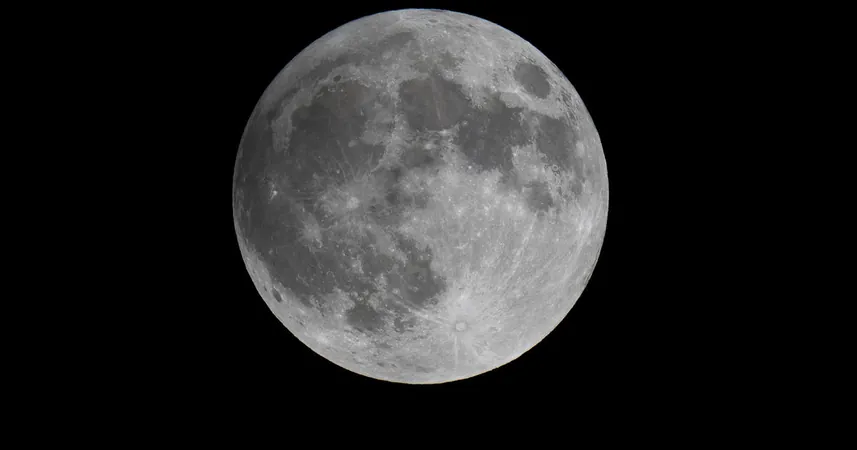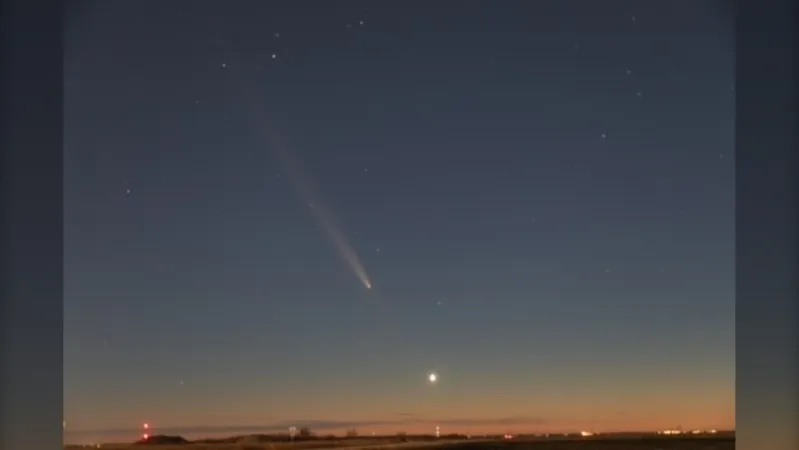
Get Ready for the Hunter's Moon: A Supermoon Spectacle Like No Other!
2024-10-13
Author: Liam
Introduction
This week, stargazers and moon enthusiasts around the globe are in for a treat! As the full moon rises, it will proudly carry the impressive title of the Hunter's Moon, marking a significant event in the lunar calendar. This captivating celestial display will not only light up the night but will also be recognized as a supermoon, making it the brightest of 2024!
What is the Hunter's Moon?
The Hunter's Moon, a term with roots deep in history, refers to the full moon that follows the autumnal equinox and the Harvest Moon of September. This traditional name is a nod to the hunting season's peak, as it historically indicated the time to prepare for the winter months. Indigenous cultures in North America had their own names for this luminous event, such as Blood Moon, Travel Moon, and Dying Grass Moon, each symbolizing important seasonal shifts.
Why is this Moon Special?
But what makes this full moon truly special? It is classified as a supermoon, a phenomenon that occurs when the moon is at its closest point to Earth in its elliptical orbit. This proximity causes the moon to appear larger and significantly brighter. NASA notes that the average distance from Earth to the moon varies, ranging from 226,000 miles to 251,000 miles, which means supermoons can peak in brightness only three or four times a year.
When to See the Hunter's Moon
The upcoming Hunter's Moon stands tall as the third in a series of four consecutive supermoons. Mark your calendars for Thursday, October 17, as the moon will reach its closest approach, known as perigee, just the day before, on Wednesday evening at approximately 9 p.m. Eastern Time. Expect to witness a breathtaking sight just after the sun sets, with the full moon making its grand entrance around 7:30 a.m. on Thursday.
Viewing Opportunities
This supermoon’s impact will be felt across different regions, shining brightly from Tuesday night through to Friday morning, providing ample opportunities for night owls and early risers alike to enjoy the view. Astronomers suggest the moment you should definitely not miss is shortly after sunset when the moon glows spectacularly near the horizon.
Conclusion
Prepare your telescopes and cameras, gatherings with friends, or peaceful solo stargazing sessions, as this Hunter's Moon promises to be an unforgettable visual experience. Don't let this chance slip by—make sure you're looking up at the sky! Whether you're a seasoned astronomer or simply enjoy the beauty of nature, this supermoon will surely leave you spellbound.









 Brasil (PT)
Brasil (PT)
 Canada (EN)
Canada (EN)
 Chile (ES)
Chile (ES)
 España (ES)
España (ES)
 France (FR)
France (FR)
 Hong Kong (EN)
Hong Kong (EN)
 Italia (IT)
Italia (IT)
 日本 (JA)
日本 (JA)
 Magyarország (HU)
Magyarország (HU)
 Norge (NO)
Norge (NO)
 Polska (PL)
Polska (PL)
 Schweiz (DE)
Schweiz (DE)
 Singapore (EN)
Singapore (EN)
 Sverige (SV)
Sverige (SV)
 Suomi (FI)
Suomi (FI)
 Türkiye (TR)
Türkiye (TR)